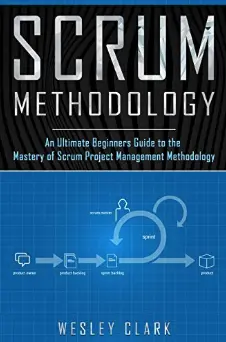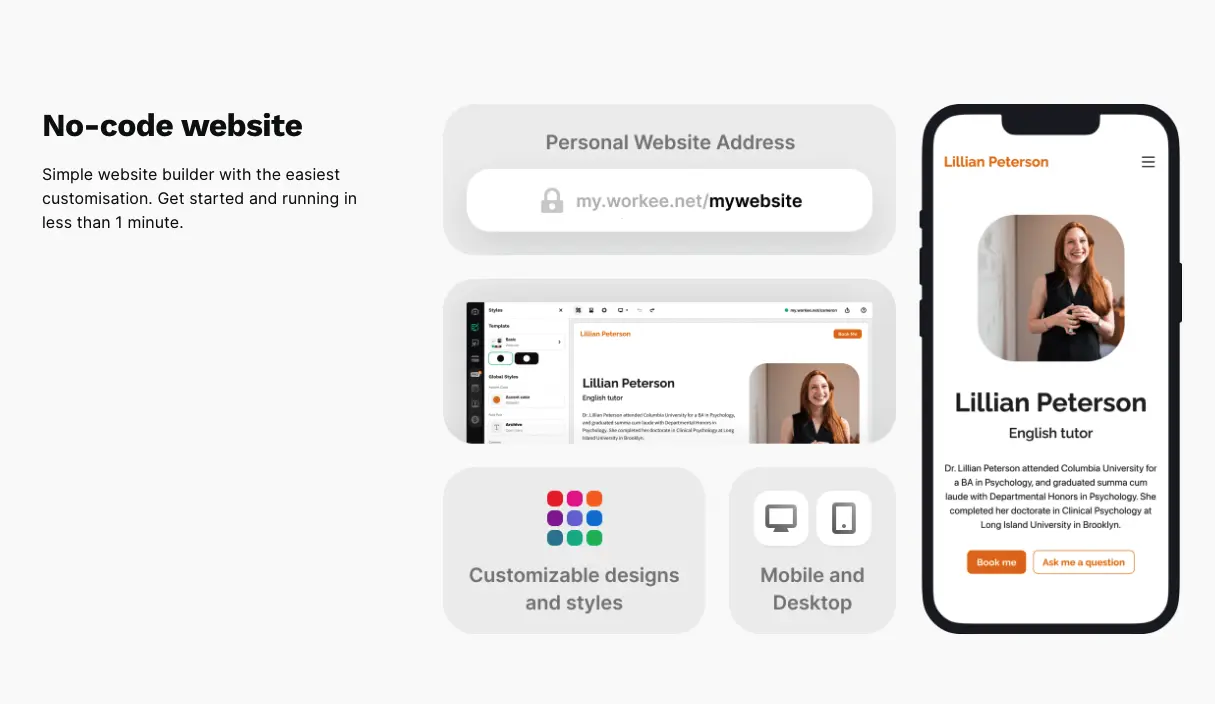Follow: YouTube | Apple | Spotify | Google
Ihor Bauman validated a startup idea to help freelancers to create a personal no-code website with pre-integrated booking, scheduling, and payments in “less than a minute”. Designed for private tutors, coaches, health experts, and other freelancers that run appointments. They recently canceled $1.5K MRR to increase month of over monthly user growth 3X from 10% to 35%, and cut over 50% the user acquisition cost from $60 per user to $20 per user.
Please introduce your company and share how did you discover the pain you hope to solve?
Workee, is a simple no-code website builder designed for freelancers, allowing them to schedule appointments, deliver online consultations, and charge payments, all in one integrated tool. The original pain was discovered due to a problem faced by my mother, a healthcare professional during Covid-19, where she needed to consult her clients remotely, and the only alternative she found required to integrate a number of tools together, which was a complex task for my mother to manage,
What was the initial mousetrap or strategic differentiation that attracted the first users, and how did you validate it?
Workee mousetrap was and still is: A free website, pre-integrated with scheduling, video communication, and payment solution. We were able to validate these key pain points by running a Facebook ads campaign prior to building the product. While there are a lot of marketplace platforms and website builders, our big differentiation is that on our platform everything is in one place without the requirement to invest in additional integrations. When we ran Facebook ads to test a few hypotheses, this was the winning problem statement and value proposition that people clicked on, or signed up for with the highest conversion. This allowed us to attract the first 199 early adopters before launching the MVP of Workee.
What is the differentiation going forward?
The core concept is the same. We are positioning ourselves as the simplest personal, no-code, website builder for professionals who run appointments. The parameter we are testing is the target audience.
We are experimenting across 15 different personas, such as private tutors, coaches, health experts, psychologists, therapists, stylists, nutritionists, etc. We find that every vertical is unique. Every vertical has different values and different pains. So far, we are focusing our attention on private tutors in the US.
The private education market right now is almost $25B in the US, and it’s going to double by 2025. We see the lowest acquisition cost for private tutors. While we are not limiting other audiences to join us, we are focused on actively acquiring private tutors.
How did you change your payment and subscription model?
We started to work with a free trial model, initially requiring users to convert to a paid subscription model within 14 days, later within 30 days, which ended up yielding revenues of $1500 per month and a moderate growth rate. When we changed the model to a freemium, where users can keep using the free version forever, the user acquisition cost was reduced from $60 to $20 and the month-over-month growth rate increased from 15% to 35%. We also enjoy a better viral coefficient because users share the free tool with one another. Organic traffic from search also grew thanks to the higher volume of personal websites that were generated by the platform and were indexed by google crawlers.
Can you share funnel conversion rates from a visitor, all the way to a paid customer, and what unlocked funnel improvements?
Out of the 5,000 users we currently have in total, about 1500 are active. From funnel perspective – from visitor to signed up, conversion grew from 6% to 18%, (signed up conversion rate), and from signing up to active, it grew from a 5% to a 90% activation rate.
What unlocked the improvement was, number one the change to freemium, and number two the speed to value. We made it much simpler and faster to get value very quickly (literally within a few seconds), by allowing users to create their personal websites through data pulled automatically from their social media profiles.
By reducing the amount of input required from the user to get value and making it super simple for users to select a domain name, a social media profile, and an image and click publish, we drove the activation rate from 5% to 90%.
The key is getting to value within 10, 20 seconds of the user’s attention after signing up.
What have you measured and learned from surveys and product metrics?
We conducted interviews before building the product, but if you are not very good at asking questions, you’ll get skewed answers that are not sufficient to make decisions. I advise to acquire users and measure real product usage data, even if it’s more costly. And this is the only real way to measure real behavior, test and learn and increase the usage rates.
What worked and what didn’t distribution wise?
While Facebook ads ended up being too costly, Instagram ads and page promotion ended up getting positive results.
We create useful content followed by offers that convert pretty well. We also invest in organic channels through content marketing via the Workee blog. We are working with influencers, with bloggers, and we invite experts to write articles, and reviews for us.
We are participating in different product nominations such as G2, Capterra, and Trustpilot. We try to be everywhere in this niche.
We also use Quora for getting awareness for the brand and for having different answers published either from our company brand, from our users, or from any of our team members.
Can you share with us the challenges throughout your journey so far?
The main challenge is to unite the team towards a common vision. Because you can be a super knowledgeable guy, but without a team, you can’t do much at the end of the day. Having people that are motivated, ambitious, and ready to tackle the challenges and embrace challenges for themselves and for the company.
A startup is not only about operating the work. It is about strategy, solving problems, and coming up with new solutions on a daily basis. If you do not challenge yourself to come up with new ideas to problems, you might be going backward.
The second challenge is getting to product market fit. Product market fit is a point that changes everything for the company and for every team.
For us, it is a challenge to find that unique user profile, those unique features that they would love, those unique pains that we uncover and focus on.
How do you keep your remote team motivated?
It’s super hard right now with remote or hybrid work environments. We are remote-first because we were born during Covid. And from day one, we were like working from different locations and seeing each other about a couple of times per month.
which is not enough for being able to unite the team around a common vision, to ignite energy and momentum. I’m trying to keep processes systemized. Based on project boards, and daily stand-ups.
We are using Jira, and Slack. So everything is tracked, and clear for everyone. So in most cases, every team member understands our priorities, and our roadmap planning for a month, three months, and for a year.
I demand that every team member will have personal roles and personal responsibilities. Especially when you are working remotely because when you’re working as a team in the office everyone is more naturally engaged. But when you are working remotely, people can get lost without proper communication, or without proper management, or based on solely tech tools Some teammates might be tired, and because they are not seeing other teammates that are performing, it doesn’t give them the energy to keep going
The way I work on this challenge is to have constant communication, I personally run regular one-to-one calls for 15 minutes to 20 minutes each, where I catch up with each member. I ask questions such as how are you today? How do you feel? How is your health? How is your family, tell me, I’m your friend right now. For these 20 minutes forget about me being your manager, I’m just your friend. Tell me what is bothering you. I will help you in any way I can. In the same way, I can also ask for their help. In this way they understand that we are a team that is, doing something together because we are united in our goals. And everyone can contribute to that unity.
I insist that in our team, everyone can come up with a feature idea, or suggestion for improvement. And in 95% of the cases, it would be accepted and it would be on the website or app within a week or within a month. So in my opinion, the way to drive motivation is to enable the understanding that, each member is having personal challenges, and personal tasks and your ideas are going to get adopted.
What are your recommendations for books, blogs, and tools?
I like listening to Nathan Latka’s podcasts. I’m also a big fan of YC. We recently went through YC, a startup school that was also very interesting and very useful for everyone on our team.
My favorite reading is about SaaS benchmarks. So I’m following all the VCs updates, from our VCs and from First Round VC review, for example, they have very strong, analytic sites, so they’re sharing a lot of useful content. So it’s my best, and favorite read so far.
My favorite book is Scrum Methodology. I believe it is a crucial book to follow. I also like autobiography of famous people such as Bill Gates, Steve Jobs, Netflix guys, Airbnb guys, Wework, etc
Workee Summary
Ihor Bauman spent time validating product hypotheses through marketing experiments, before building the product and found out that the packaging of a personal website together with payment and scheduling is the most wanted set of features. Canceled $1.5K paid subscription MRR, shifted to freemium, and saw an increase in user growth. Also thanks to being able to offer immediately publishable sites now growing 30% month over month in user base. Now at 5,000 users, raised $600K, aiming to raise $2M.



